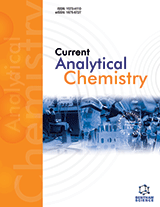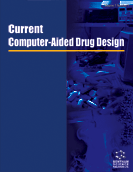Abstract
Viruses belonging to the Flaviviridae family cause clinically significant diseases in humans and animals. This family includes three genera: Pestivirus [including bovine viral diarrhea virus (BVDV)], Flavivirus [including yellow fever virus (YFV), dengue virus, and West Nile virus (WNV)], and Hepacivirus [including hepatitis C virus (HCV)]. BVDV is responsible for major losses in cattle, causing a range of clinical manifestations, and is also a problematic contaminant in the laboratory. Noncytopathic BVDV infection can remain unnoticed and infect laboratory cell lines through its presence in contaminated bovine serum used in cell culture. BVDV is considered to be a valuable surrogate virus model for identifying and characterizing antiviral agents to be used against HCV. In some aspects of viral replication, BVDV is more advantageous than the currently used HCV replicon systems. In this review, we report the design, synthesis, and activity against BVDV of a series of compounds assayed until now.
Keywords: BVDV, HCV, Antiviral agents, Structure-activity relationship, Nucleosidic compounds, Non-nucleosidic compounds
Current Medicinal Chemistry
Title: What is Known About the Antiviral Agents Active Against Bovine Viral Diarrhea Virus (BVDV)?
Volume: 17 Issue: 26
Author(s): L.M. Finkielsztein, G.Y. Moltrasio, M.E. Caputto, E.F. Castro, L.V. Cavallaro and A.G. Moglioni
Affiliation:
Keywords: BVDV, HCV, Antiviral agents, Structure-activity relationship, Nucleosidic compounds, Non-nucleosidic compounds
Abstract: Viruses belonging to the Flaviviridae family cause clinically significant diseases in humans and animals. This family includes three genera: Pestivirus [including bovine viral diarrhea virus (BVDV)], Flavivirus [including yellow fever virus (YFV), dengue virus, and West Nile virus (WNV)], and Hepacivirus [including hepatitis C virus (HCV)]. BVDV is responsible for major losses in cattle, causing a range of clinical manifestations, and is also a problematic contaminant in the laboratory. Noncytopathic BVDV infection can remain unnoticed and infect laboratory cell lines through its presence in contaminated bovine serum used in cell culture. BVDV is considered to be a valuable surrogate virus model for identifying and characterizing antiviral agents to be used against HCV. In some aspects of viral replication, BVDV is more advantageous than the currently used HCV replicon systems. In this review, we report the design, synthesis, and activity against BVDV of a series of compounds assayed until now.
Export Options
About this article
Cite this article as:
Finkielsztein L.M., Moltrasio G.Y., Caputto M.E., Castro E.F., Cavallaro L.V. and Moglioni A.G., What is Known About the Antiviral Agents Active Against Bovine Viral Diarrhea Virus (BVDV)?, Current Medicinal Chemistry 2010; 17 (26) . https://dx.doi.org/10.2174/092986710792065036
| DOI https://dx.doi.org/10.2174/092986710792065036 |
Print ISSN 0929-8673 |
| Publisher Name Bentham Science Publisher |
Online ISSN 1875-533X |
 25
25
- Author Guidelines
- Bentham Author Support Services (BASS)
- Graphical Abstracts
- Fabricating and Stating False Information
- Research Misconduct
- Post Publication Discussions and Corrections
- Publishing Ethics and Rectitude
- Increase Visibility of Your Article
- Archiving Policies
- Peer Review Workflow
- Order Your Article Before Print
- Promote Your Article
- Manuscript Transfer Facility
- Editorial Policies
- Allegations from Whistleblowers
- Announcements
Related Articles
-
Cartilage Allograft Materials for Cartilage Defect Repair and Tissue Engineering
Current Tissue Engineering (Discontinued) Heterologous Production of Peptides in Plants: Fusion Proteins and Beyond
Current Protein & Peptide Science Subject Index to Volume 1
Current Pharmacogenomics Preface
Anti-Cancer Agents in Medicinal Chemistry Classical Inhibitors of NOX NAD(P)H Oxidases Are Not Specific
Current Drug Metabolism Metabolism and Pharmacological Mechanisms of Active Ingredients in <i>Erigeron breviscapus</i>
Current Drug Metabolism Hydroximic Acid Derivatives: Pleiotropic Hsp Co-Inducers Restoring Homeostasis and Robustness
Current Pharmaceutical Design Modification of Intestinal Flora in the Treatment of Inflammatory Bowel Disease
Current Pharmaceutical Design Role of microRNAs in Vascular Remodeling
Current Molecular Medicine Comparison of Anti-HCV Activity of Multiple Punica granatum Extracts and Fractions in Virus-infected Human Hepatocytes
Current Pharmaceutical Biotechnology Research Advances in Neuroblastoma Immunotherapy
Current Pediatric Reviews Historical Observations on the Discovery of Platelets, Platelet Function Testing and the First Antiplatelet Agent
Current Drug Targets Contemporary Animal Models For Human Gene Therapy Applications
Current Gene Therapy Human Clinical Studies of Tea Polyphenols in Allergy or Life Style-related Diseases
Current Pharmaceutical Design Ion Channel Modulation as a Therapeutic Approach in Multiple Sclerosis
Current Medicinal Chemistry Aluminum Induced Immunoexcitotoxicity in Neurodevelopmental and Neurodegenerative Disorders
Current Inorganic Chemistry (Discontinued) Anti-Inflammatory Agents in Ageing and Age-Associated Diseases
Anti-Inflammatory & Anti-Allergy Agents in Medicinal Chemistry Stretch, Shrink, and Shatter the Rhythms: The Intrinsic Circadian Period in Mania and Depression
CNS & Neurological Disorders - Drug Targets Graves Ophthalmopathy: A Review of Immunogenetics
Current Genomics Myelin Sheaths and Autoimmune Response Induced by Myelin Proteins and Alphaviruses. I. Physicochemical Background
Current Medicinal Chemistry


























